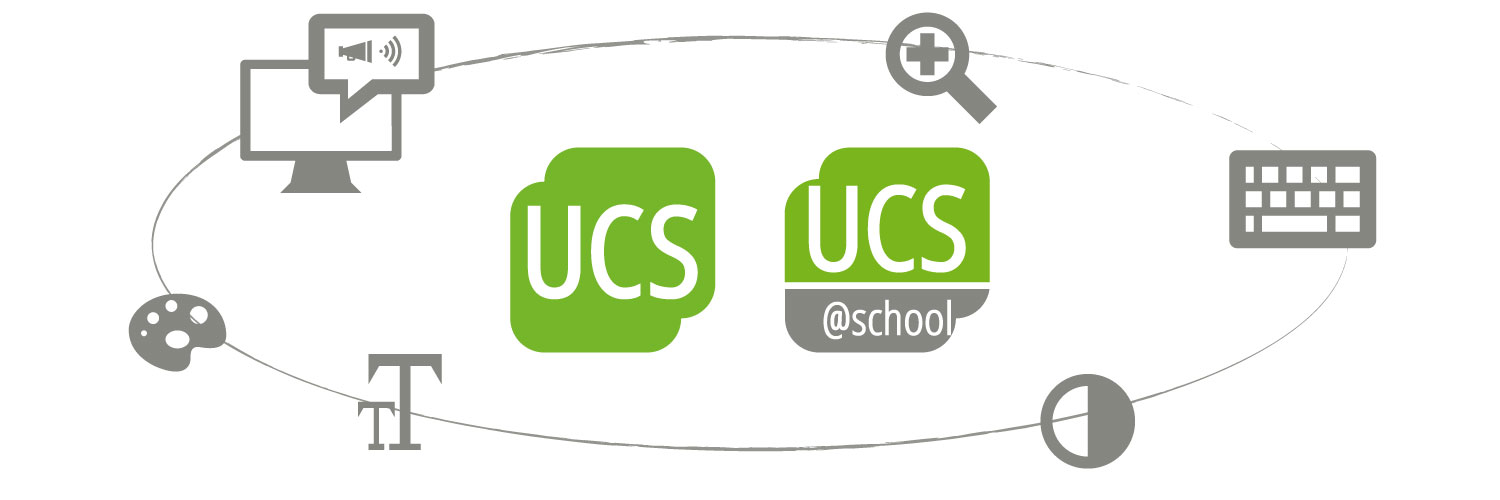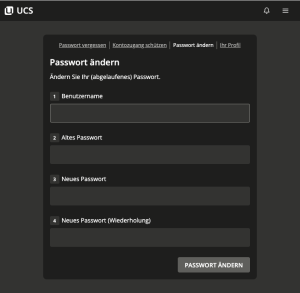Most of us find it difficult to imagine what it’s like to work on a computer, tablet or smartphone with limited physical, sensory and/or cognitive abilities. There are numerous obstacles out there in the digital world, not just for users with physical disabilities. Older people and non-native speakers face barriers in digital environments as well—so let’s talk about how we can include all users, in particular users in the education and in the public sector.
UCS and UCS@school customers increasingly request accessible interfaces, so we’ve checked whether our software meets common accessibility guidelines. Together with Dataport, we’ve tested the portal of Univention Corporate Server (UCS), which works as identity and access management in the Phoenix project. We’re taking the results as motivation to focus even more on accessibility.
In this article, I would like to report on how we plan to enhance our portal’s accessibility in future. I’ll also talk about existing accessibility standards and explain which of them we’ve already implemented for use in schools and public administration.
Table of Contents
Who needs Accessibility anyway?
Software has to work and it has to look good—that’s for sure. The portal of the current UCS and UCS@school versions not only has an elegant and modern look, but we have also run extensive usability tests to check its user-friendliness. But what about accessibility?
The topic is often overlooked, or it is supposedly limited to “accessible for the disabled”. However, accessible software is more than that—it’s not just about operating a computer with technical aids such as Braille displays, speech output, screen readers or special input devices. It’s also about lowering the barriers for older people, people who speak other languages, or those with cognitive impairments.
So, who determines what accessibility is? To this end, various standards have been established which contain recommendations for improving accessibility. Amongst other things, this involves web content as well as ICT products and services (information and communication technology). In the next section, I would like briefly to describe the current guidelines.
Standards for the WWW, Europe and Germany
When the possible constraints are diverse, then a correspondingly large number of aspects must also be taken into account for accessible applications. Several organizations and authorities have already put some thought into this, first and foremost the World Wide Web Consortium (W3C). The Web Content Accessibility Guidelines (WCAG) document the most important requirements, including those for the accessibility of web content on desktops, laptops, tablets and mobile devices. The current guidelines (WCAG 2.1) describe, amongst other things, that informative content must not be conveyed exclusively via images, color designs or other media.
In Europe, the European Telecommunications Standards Institute (ETSI) has addressed the issue, and in Germany, the Accessible Information Technology Ordinance (Barrierefreie-Informationstechnik-Verordnung, BITV 2.0) regulates the accessible design of modern information and communication technology. To give public authorities time to adapt their digital offerings to the standard’s new version, there was a transition period: until February 12, 2022, it was permitted to comply with “only” a previous version of the specifications. After that, websites, apps and electronically supported administrative processes of federal public agencies must fully comply with the specifications of version EN 301 549 V3.2.1 (2021-03).
Enough theory, let’s get down to business: How do these standards help us at Univention and how can we implement them in our software?
Accessible Frontend for UCS and UCS@school
Accessible web frontends are essential for barrier-free, digital offerings. UCS 4.x already implemented some of the above-mentioned standards to address issues for users with impaired vision and color vision deficiencies. For instance, it has been possible to scale the size of fonts, adjust the colors and increase the contrast in the Univention Corporate Server portal for some time now.
Equally important is the text structure. Using semantic HTML for markup makes sure that a screenreader can identify a heading as a heading and a paragraph as a paragraph. As a matter of fact, people who have difficulty reading longer texts also benefit from semantic layout elements.
As mentioned above, UCS 5.0 has set the course in the direction of better accessibility. We’ve decided to switch to the Vue.js JavaScript framework which makes focusing of control elements a lot easier—ideal for using keyboard shortcuts instead of the mouse. On top of that, it’s easy to add text snippets to the control elements which is practical for users of screenreaders and for administrators who want to add custom labels. That way apps and other portal functions can make use of plain and easy language in future.
The first accessible app is our Self Service which allows users to manage their own password without having to ask an administrator. In addition, they can use the Self Service to add profile pictures, private addresses, and other contact information. Since UCS 5 (Erratum 262 from March 23, 2022), the Self Service is accessible.
Coming up soon
User and group administration are next. We want to gradually make the corresponding modules accessible, with a specialist from Dataport continuing to assist our developers. There will be extensive testing of every change and every new feature, and we’re happy to take the expert’s feedback into account.
Creating accessible software may involve a certain amount of additional work, but this shouldn’t stop us from making the effort and designing our own products accordingly. For the upcoming releases we will adapt the portal and the modules step by step to current standards. Do you have any questions or feedback? Then feel free to leave a comment below this article.

